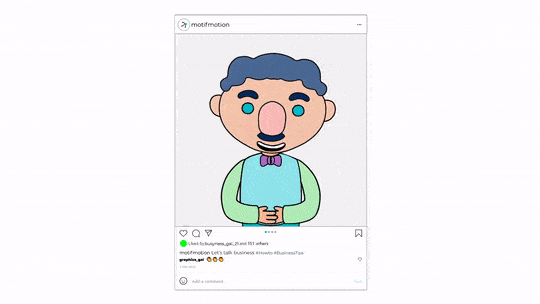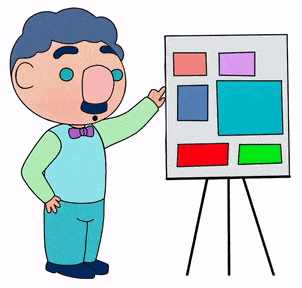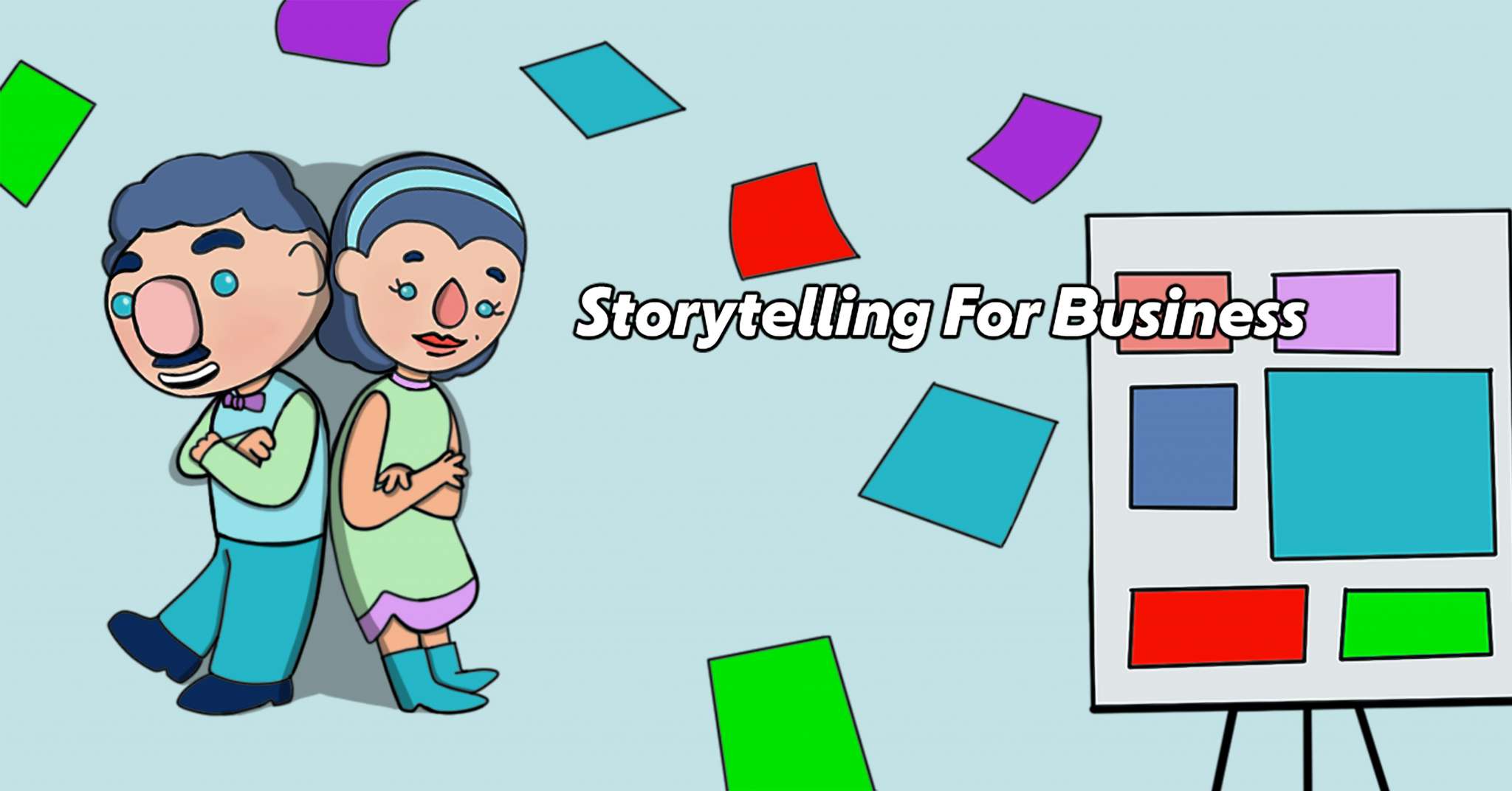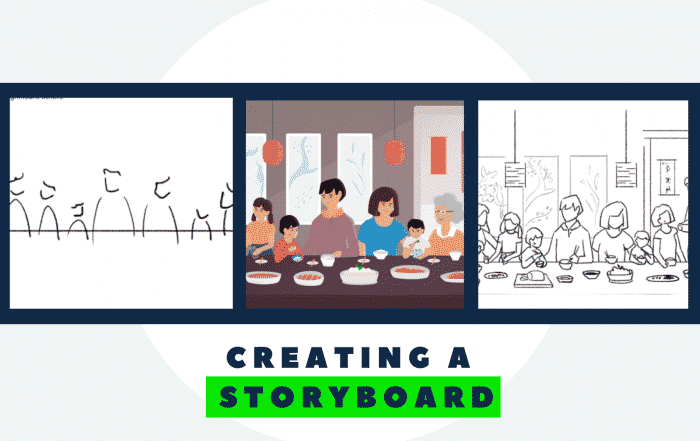To understand the importance of utilizing storytelling techniques for business, we’ve got to take things back. I’m talking WAY back!
Storytelling is the most ancient art form there is. Well before the earliest documented examples of written language, legends and myths were passed down from generation to generation.
Fast forward through the invention of farming, some 10,000 years ago and to the present day. Modernism has given us many gifts — but if we’re being honest, it’s not all rainbows and sunshine. In particular, it’s been said that the human element is in short supply these days — at least compared to generations past.
With storytelling, it’s possible to bring business back to its roots; creating genuine connections between people and groups. A focus on people rather than algorithms, and connection rather than robotic information exchange.
Thankfully, there are several storytelling techniques for business that can help you successfully integrate the craft into your business practices; strengthening your message and communicating with your audience.
Storytelling – An Ancient Artform
- Storytelling is the oldest form of communication there is. It’s been around for longer than historians can track — across all cultures and walks of life.
- Business is no exception! Stories anchor organizations to missions, people to organizations, and people to other people!
- Great storytelling is vital in the marketplace of ideas

How to Perfect the Art of Storytelling in Business
“People will forget what you said, people will forget what you did, but people will never forget how you made them feel.” – Maya Angelou
There is no doubt about it — effective storytelling is a form of art. Style is important, technique is crucial, and using your voice is key. Let’s explore some of the techniques you can leverage when storytelling in business.
When you use storytelling to make people feel, it’s much more likely that they will remember your message. Through stories, you can help your clients, prospective customers, and tribe followers feel connected to your brand.
By inviting them along a journey, you can build trust, communicate your mission, and manage your persona. And that messaging can leave a lasting mark on your audience.
The psychology of marketing in the 21st century leaves a clear strategic blueprint. Communicate with honesty, and invite your audience to feel what you feel.
On that point…
Make it Personal

There are lots of ways to personalize your storytelling.
- Include a “who we are” video on your about page
- Tell the tale of your company’s founding
- Introduce your founder(s)
- Highlight stories of your employees, clients, and happy customers.
Whether you’re a tiny startup or a fortune 500 company, great relationships are, and always have been, the backbone of business success. For that reason, it is crucial that people (your clients, your employees, etc.) feel connected to you. That they believe in your mission, or the value of your product or your service. Even if what you’re sharing with the world might not seem especially personal on the face of it, by using storytelling techniques for business you can make it personal.
Companies with lackluster brands can seem like anonymous monoliths. Some of the easiest ways to create connection include sharing videos, photos, and stories about your leadership and staff. This might take the form of a company culture video on your careers page, or a video on your “About Us” page, discussing the history of your company.
In traditional, face-to-face business, this takes the form of getting to know the client on a personal basis before making a hard pitch. You work to understand what they want and need. And how you can help them.
Use the three-act structure in your business storytelling
When you’re telling business stories, consider leverage the three-act structure — one of the most popular formats of a story. It looks like this:
Act I
We get to know the protagonist and his or her skills. In this case, the protagonist is your brand, your product, or the hero representing your business. Ask yourself about who the protagonist is, and what values you want them to uphold. In Act I, you also want to present a problem. This is where you establish a need that is failing to be met, or a niche that has not been sufficiently catered to.
Act II
The story becomes more specific and the protagonist meets a challenge — or a series of challenges. These trials and tribulations usually demonstrate how the protagonist’s skills improve and grow over time. Eventually, this leads to a climax, in which the protagonist proves their value, or solves a problem — i.e. becomes “the hero.”
Act III
In most stories, Act III is the resolution. Here, we tie up loose ends and give a hint about what will happen in the future. For the sake of the art of storytelling for business, this is also where you should include your call to action.
Examples of the Three Act Structure
Okay, you might be thinking…that all sounds well and good…but how in the world do I actually apply it? Glad you asked! Here are some examples.
- In a case study video
- Act I: You might briefly introduce your brand and discuss why the client came to you with a problem.
- Act II: You reveal the steps you took to resolve the problem, how you enacted them, and the end result (hint: you solved the problem!)
- Act III: If you can fit in a client testimonial, let the customer attest to how satisfied they were. Or skip this step, and jump right to a call to action. The call to action could be as simple as inviting the viewer to reach out if they have similar problems. Or it could provide instructions for booking a demo, or visiting a website.
- Sales pitch
- Act I: Reveal a problem your viewer faces, in a simple way. For example, a time-share company might point to the fact that we pay for all sorts of items in bulk, because it’s smart. “So why don’t we do the same thing with our vacations?”
- Act II: Explain how your product or services solve the problem — telling your story in such a way that positions your brand as absolutely essential. In doing so, anticipate points of doubt in advance, and knock them down as you go. Use imagery to help your clients imagine working with you.
- Act III: After a smooth transition, invite the client to take advantage of the opportunity. If they say no, you start back at the first step and repeat the process until their answer changes.
3 Popular Business Storytelling Techniques
There are a number of tangible business storytelling techniques that can help make your story impactful. For now, let’s focus on three distinct storytelling techniques that will help turn these lofty approaches into real marketing tools.
Written Storytelling
Written storytelling is the most straightforward way to tell your company’s story. But that doesn’t mean it’s easy!
Great written storytelling requires:
-
- A deep understanding of your organization’s mission.
- Pinpoint knowledge of your goals.
- Intimate familiarity with your target audience
- Empathy for the reader
- And of course, excellent writing skills!

Good old written storytelling! Could there be anything more iconic?
As far as business goes, written storytelling can manifest in a dizzying amount of ways. Obvious examples include an “About Us” page on a company’s website, a post on social media, or written employee feature, client testimonial, or letter from a CEO.
Want more examples? How about training materials, sales presentations, and internal messaging for employees? All of these require great copywriting, and at times, great storytelling.
Of all the business storytelling techniques discussed in this article, written storytelling requires the highest level of investment from an audience-member. This means it’s excellent for someone later in the communication funnel. But if you want to grab your viewer’s attention for the first time, consider one of the methods discussed below!
Visual Storytelling

Visual storytelling takes many forms.
-
-
- High end visual storytelling content includes: graphic design, web design, professional photography and infographics.
- More simple forms include graphs, charts, and memes and GIFs created from previously generated content.
- Like all storytelling, it also requires a clear understanding of the target audience, project goals, and overall mission.
-
When it comes to effective storytelling techniques for business, visual storytelling is the broadest. Luckily, it adapts very well to modern mediums. You can tell stories through any of the following mediums:
-
-
- Infographics
- Visual summaries and reports
- Advertisements
- Webpages
- Social media posts and sponsorships
- Presentations (Powerpoint, Prezi, Keynote, etc).
- Photography
- Video
-
Benefits of Visual Storytelling
Visual storytelling is a quintessential storytelling techniques for business for a few reasons.
-
-
- Visual storytelling is memorable, especially because it often calls on the viewer to “fill in the blanks,” and infer based on an image or symbol. This helps create “stickier” memories, allowing us to remember what we learned more easily.
- Visual storytelling is shareable. We are more likely to send a visual story to a friend via direct message than we are to any other type of material.
- Visual storytelling is engaging, because it involves various senses. It can cause you to associate images, feelings, and sentiment with a brand or person.
-
Video Storytelling
-
-
- Video storytelling can take shape as live action, animated video, or a mix of the two!
- Videos are famously versatile. They can be shared across a range of platforms, and used for a variety of purposes.
- They are also extremely engaging. Videos earn 1,200% more shares than text and images combined. That’s why they are the most effective form of marketing content on the planet.
-

Video storytelling overlaps with the previous two categories, but many more types of content fall under this umbrella term too. Examples of video storytelling in business include:
-
-
- Animated video
- Case studies and testimonials
- Product reviews
- Sponsorships
- On boarding videos
- Company culture videos
- Demos and explainer videos
- Sales presentations
- Live streams
- Full-length documentaries
-
Benefits of Video Storytelling
Imagine the delight of school-aged children when a teacher puts on a video for the class. Visual learning is fun, and that spirit doesn’t go away with age. You can tactfully use this to your advantage. Here’s why:
-
-
- Video storytelling is flexible. Videos have a unique capability to capture an audience’s attention, and in a myriad of ways.
- Video storytelling can go viral. On social media, videos generate 1,200% more shares than text and images combined.
- Video storytelling is impactful. With video storytelling, you can ensure that the points you want to highlight are emphasized at the right moment.
-
Animated Storytelling
Animation takes visual storytelling to a whole new level. Animation is attention grabbing, fun, unique, and perhaps most importantly, different. In business, you can utilize animated storytelling with:
-
-
- An animated logo
- An animation series
- Using Gifs
- Animated videos
-
Benefits of Animated Storytelling
Animated video offers a range of advantages.
-
-
- Animated storytelling is unique. Professional animated storytelling isn’t very common, and it helps your story stand out from the crowd.
- Animated storytelling is attention-grabbing. It allows you to incorporate professional design and illustration, which will help catch — and hold — your audience’s attention.
- Animated storytelling is ideal for breaking down abstract ideas, and complicated products. Animation is fantastic at simplification, which makes it perfect for breaking down complex subjects into digestible content. It can be used to convey any message, with the help of symbols, graphics, and movement.
-
Conclusion: Storytelling Techniques for Business: The Ultimate Guide
Storytelling is an age-old strategy to engage audiences; it’s been around so long because it is foundational to the human experience. Storytelling is also a craft that can be incorporated into countless different mediums. Anything that has a powerful beginning, middle, and end, is a story.
If you can take advantage of the storytelling techniques mentioned here, you’ll position yourself to find more clients, and engage with them in exciting and innovative ways. Looking for a partner to help you reach your communication and engagement goals? Contact Motifmotion today!





